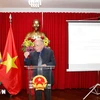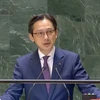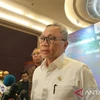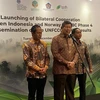Medical tourism now has been a growing segment of Thailand's tourism and the health care sector is relying on a policy from government to take the country into a medical hub in the region.
The Thai government has recently worked out a strategy, to be implemented until year 2016, for the development of Thailand into a medical focal point. The strategy involves four major areas: medical treatment, health promotion, traditional Thai medicine and alternative medicine, and health products, especially Thai herbs.
The Ministry of Public Health was assigned to work in an integrated manner with various relevant agencies, included the Tourism Authority of Thailand (TAT), in implementing this policy. The main objective is to encourage health establishments in Thailand to raise the standards of their services at all levels.
Another objective is to enhance the competitiveness of Thailand , as the country has several strengths in terms of experienced health personnel, modern facilities and equipment, hospitality, excellent services, and reasonable prices.
There are 28 hospitals in Thailand accredited the Joint Commission International Accreditation, the highest number of this prestigious international standard in Asia . The country is also widely recognised by various international institutes as the spa capital of Asia .
Statistics of Thailand ’s Ministry of Public Health show that, in 2012, foreign visitors sought medical services here on more than two million trips. Popular health services include medical check-ups, cosmetic surgery, transsexual surgery, dental care, orthopedic surgery, and heart surgery.
Medical tourism generated 65 billion THB in 2010 (over 2 billion USD). The earnings rose to 97.8 billion THB in 2011 and 121.6 billion THB in 2012.
The Thai health and wellness tourism sector is expected to be worth 2 trillion THB by 2014, combining both domestic and international revenues.-VNA
The Thai government has recently worked out a strategy, to be implemented until year 2016, for the development of Thailand into a medical focal point. The strategy involves four major areas: medical treatment, health promotion, traditional Thai medicine and alternative medicine, and health products, especially Thai herbs.
The Ministry of Public Health was assigned to work in an integrated manner with various relevant agencies, included the Tourism Authority of Thailand (TAT), in implementing this policy. The main objective is to encourage health establishments in Thailand to raise the standards of their services at all levels.
Another objective is to enhance the competitiveness of Thailand , as the country has several strengths in terms of experienced health personnel, modern facilities and equipment, hospitality, excellent services, and reasonable prices.
There are 28 hospitals in Thailand accredited the Joint Commission International Accreditation, the highest number of this prestigious international standard in Asia . The country is also widely recognised by various international institutes as the spa capital of Asia .
Statistics of Thailand ’s Ministry of Public Health show that, in 2012, foreign visitors sought medical services here on more than two million trips. Popular health services include medical check-ups, cosmetic surgery, transsexual surgery, dental care, orthopedic surgery, and heart surgery.
Medical tourism generated 65 billion THB in 2010 (over 2 billion USD). The earnings rose to 97.8 billion THB in 2011 and 121.6 billion THB in 2012.
The Thai health and wellness tourism sector is expected to be worth 2 trillion THB by 2014, combining both domestic and international revenues.-VNA



















